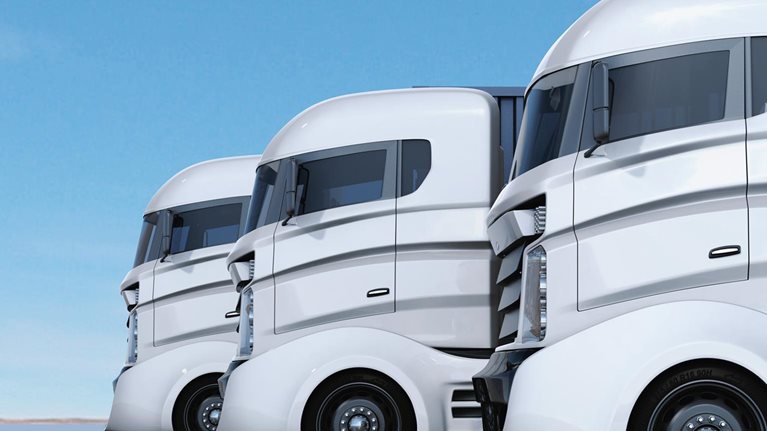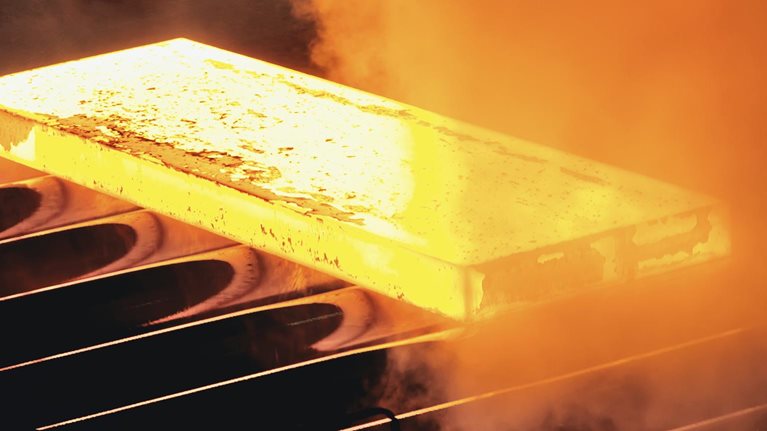As the world transitions to lower greenhouse-gas emissions, construction companies have a major role to play. In making the green buildings of the future, they have a chance to tap into demand that spans geographies and architectures. Indeed, greener business models are potential magnets for trillions of dollars earmarked for sustainable investment. In addition, companies that adapt effectively will ensure they are aligned with an increasingly stringent regulatory agenda.
The decisions made by construction executives now will determine how they are positioned for the transition over the coming decade. Those that prepare astutely are likely to seek out emerging pockets of innovation and dial up investment in sustainable technologies and capabilities. To be sure, new materials such as green steel are more expensive, and will therefore demand a new pricing model. However, they can significantly reduce embodied carbon—in commercial buildings by as much as 70 percent by 2030.
Amid tight industry margins, a priority for decision makers will be to ensure that there is a solid business case for change. The key in that regard will be to establish market position, while adjusting to a new cost base. They must also ensure that greener business models are aligned with demand that will rise at an uncertain pace over time. A tricky calculation is required, but the prize is a chance to get ahead in a market that is set for a potentially rewarding future.
Construction industry emissions
From houses to bridges, hospitals, and skyscrapers, the construction industry is responsible for approximately 25 percent of global greenhouse-gas emissions. A third of these are associated with materials and the construction process, or so-called “embodied carbon.”1 One reason for the industry’s high emissions is that it is a voracious consumer of steel, accounting for more than 50 percent of global demand.2 Due to the energy required for its production, steel is a carbon mega-producer, accounting alone for around a quarter of emissions in the construction process.3 Given these metrics, decision makers in both steel and construction need to take stock, consider their options, and plot a realistic path toward a lower climate impact.
Under the Paris Agreement on climate change, governments pledged to keep global warming below 2°C higher than preindustrial levels, and ideally 1.5°C. To achieve that goal, human emissions of greenhouse gases (GHG) must fall to net zero by 2050. In the construction sector, massive changes are required to align with that pathway. However, by shifting from high-emissions steel to near-zero emissions steel, the industry could take a significant step forward.
Decarbonizing steel
Partial steel decarbonization is possible through wider use of modern furnace technologies, the most efficient of which are powered by natural gas and use energy-efficient direct reduced iron or hot briquetted iron (NG DRI/HBI+EAF) to make steel. These emit much less GHG than traditional coke-fueled blast furnaces or basic oxygen furnaces (BF/BOFs). However, the latter still account for approximately 73 percent of global production and are dominant in Europe and China.4
Another route to lower-CO2 steel would be to retrofit BF/BOFs for carbon capture and storage (CCS) or carbon capture and utilization (CCU). These would theoretically enable sequestration of about 85 percent of CO2 emissions from coke feedstock.5 However, the approaches are not yet proven at scale. The North Star for decarbonization would be to scale hydrogen-reduced DRI/HBI EAF furnaces powered with renewable energy. With this combination, producers could make steel with a carbon intensity of less than 0.2 tCO2 per metric ton of steel, compared with a global average of 1.8 tCO2 with today’s cleanest technologies. Still, the cost would be high. The steel would need to command a “green premium” of 20–25 percent over 20 years to fund construction of the DRI plant and EAF (not including capital expenditure for hydrogen production, transport, and storage) (Exhibit 1).

In switching to hydrogen-powered furnaces, a significant factor would be the availability of low-carbon hydrogen. Despite being among the most abundant elements on Earth, the gas barely exists in its pure form and must be extracted from compounds in an energy-intensive process. Most hydrogen production consists of “grey hydrogen,” made through steam methane reforming (SMR). This creates a gas composed of about one-tenth hydrogen and nine-tenths CO2. By contrast, cleaner “blue hydrogen” involves combining fossil fuels with steam to produce hydrogen and CO2, and then storing the CO2 underground. A still cleaner approach is to use electrolysis to separate hydrogen from water, producing “green hydrogen.” However, this costs around $5 per kilogram to produce, a prohibitive amount in the context of current industry economics.6 In addition, there are challenges associated with availability and quality of scrap, especially outside the United States, and limited access to renewable power.7 Still, as green-hydrogen technologies mature over the coming years, costs are expected to fall. Indeed, more than 25 projects are under development, suggesting there is a reasonable possibility of scaled production in the years ahead.8
Navigating hurdles
Against this background, what are the key hurdles to the construction sector moving to green—or greener—steel? The reality is that, beyond technical challenges, companies face significant commercial and structural barriers. Certainly, the sector’s generally low margins are a limiting factor, dampening producer appetite for green technologies.9 Established approaches produce steel for approximately $400 to $500 per metric ton at the slab level. Near-zero emissions steel is more expensive, albeit with significant variations based on technology, location, and project.
Another barrier to adoption is that individual developers do not routinely count emissions from the steel they consume. This is due to a combination of factors, including a lack of industry standards, patchy regulation, and the absence of tools to measure embodied carbon (contained in construction materials from extraction to use).10 Indeed, no certification or grading system has been widely adopted to date.11 Furthermore, the steel industry services a highly fragmented construction landscape. In North America and Europe, the value chain is characterized by multiple intermediaries—with thousands of companies competing for business—and supply chains consisting mainly of small manufacturers and merchants (Exhibit 2). Against this backdrop, effective change at scale is more difficult to achieve.

Commercial sector opportunities
Despite many challenges, economically feasible progress is possible. To demonstrate the potential for the construction industry to adopt greener steel, McKinsey analyzed an illustrative marginal abatement cost curve for materials and construction associated with an eight-story commercial office building.12 In a business-as-usual scenario, total embodied carbon in the construction phase would be about 1,900 tCO2, of which approximately 85 percent would be from materials.13 Of that total, some 25 percentage points would be associated with steel (and 37 percentage points with concrete).14 The analysis shows it would be possible to reduce the building’s embodied carbon by about 1,250 metric tons (or 70 percent). This would be through alternative technologies, materials, and steel-production methods that we expect to be widely commercially available by 2030.
In modeling the office building’s decarbonization pathway, we assessed more than 25 individual levers.15 These can be grouped in five categories. The first is to prioritize efficiency in construction materials and design. This would be a no-regret move that, by definition, would lower material and construction costs. The second would be to migrate to lower-CO2 steel. Moving from BF/BOF to EAF steel, for example, would have an immediate abatement impact on embodied carbon (more than 100 metric tons of embodied CO2 in our example, or more than 8 percent of total abatement potential). There are further gains available through low-CO2 concrete, flooring, and tiling. And replacing structural steel with glulam beams and cross-laminated timber (CLT)—in addition to replacing concrete slabs with CLT or using timber instead of concrete for load-bearing walls—would further reduce embodied carbon.16 Finally, companies could embrace electrification of on-site equipment, such as generators and machines.
In conclusion, the construction sector presents a significant abatement challenge, but also a real opportunity to tackle one of the major industrial sources of emissions. To get there, the sector should start moving toward greener technologies, and planning for realistic economic scenarios that will enable a more profound transition. With that goal in mind, an early priority should be standardization of measurement and labeling systems. These would enable companies to more easily price and streamline their green procurement decisions. In a similar vein, construction companies would benefit from methodologies to track levels of embodied carbon, with thresholds embedded in rating systems such as such as Leadership in Energy and Environmental Design (LEED) and Building Research Establishment Environmental Assessment Method (BREEAM). This would enable decision makers to more confidently set targets and plot decarbonization pathways.
On the demand side of the equation, near-zero emissions steel cannot yet compete with established technologies on the basis of price alone. To unlock demand, developers, operators, owners, and large occupiers could consider forming buyer’s clubs to aggregate purchase commitments. In addition, they could commit to offtake agreements with near-zero emissions mills and seek out dedicated green funding for specific projects, as some construction companies are already doing. Financers could facilitate that process by setting up systems to track and report on funding of embodied carbon, and by leveraging environmental product declarations and life cycle assessments to support quantification. They could, in parallel, orient toward more green bonds, green loans, or green revolving-credit facilities. Finally, as in most green transition scenarios, there is power in knowledge. Almost everybody who works in hard-to-abate industries is on a journey of learning about sustainability issues, and industry participants should not be reluctant to call for more education, research, and collegiality. Through joint efforts, stakeholders can promote sharing of perspectives, case studies, and data.
Through this range of efforts, greener technologies could enable a significant reduction in steel industry emissions, and therefore a more sustainable construction industry. In the context of a fast-warming planet, these would represent important achievements. The imperative for decision makers, therefore, should be to seize the moment, adopt a radical mindset, and take concrete steps to transition to a greener future.


